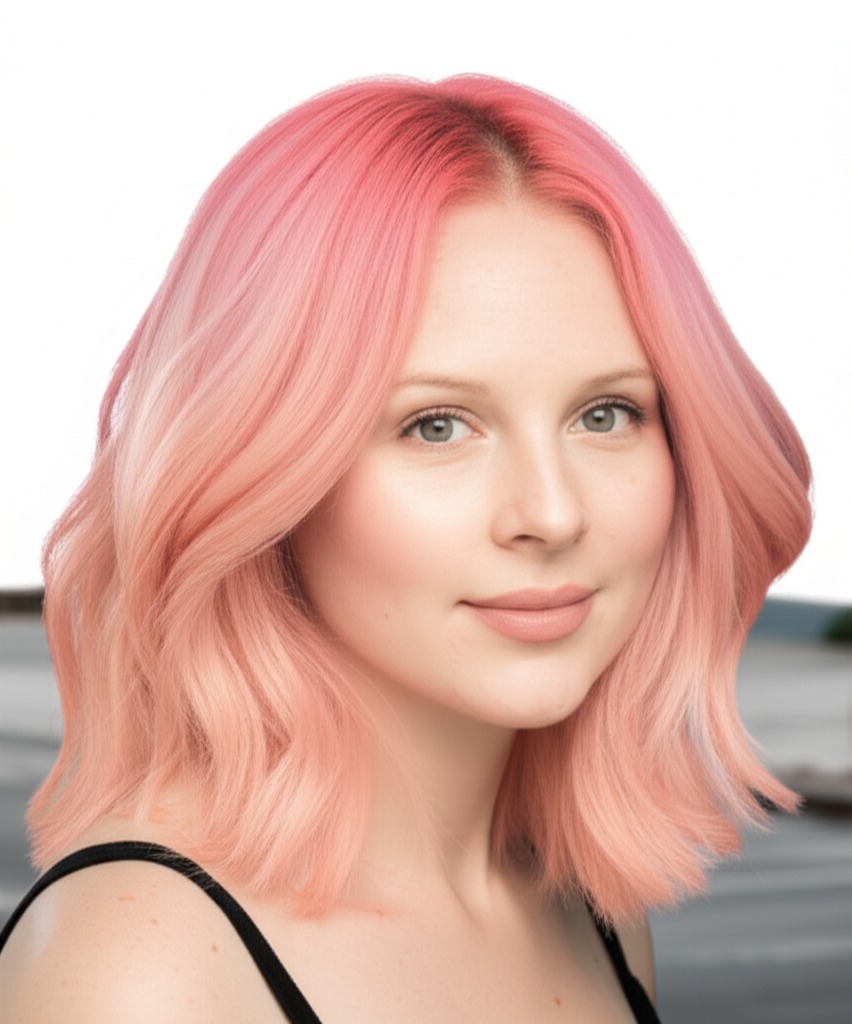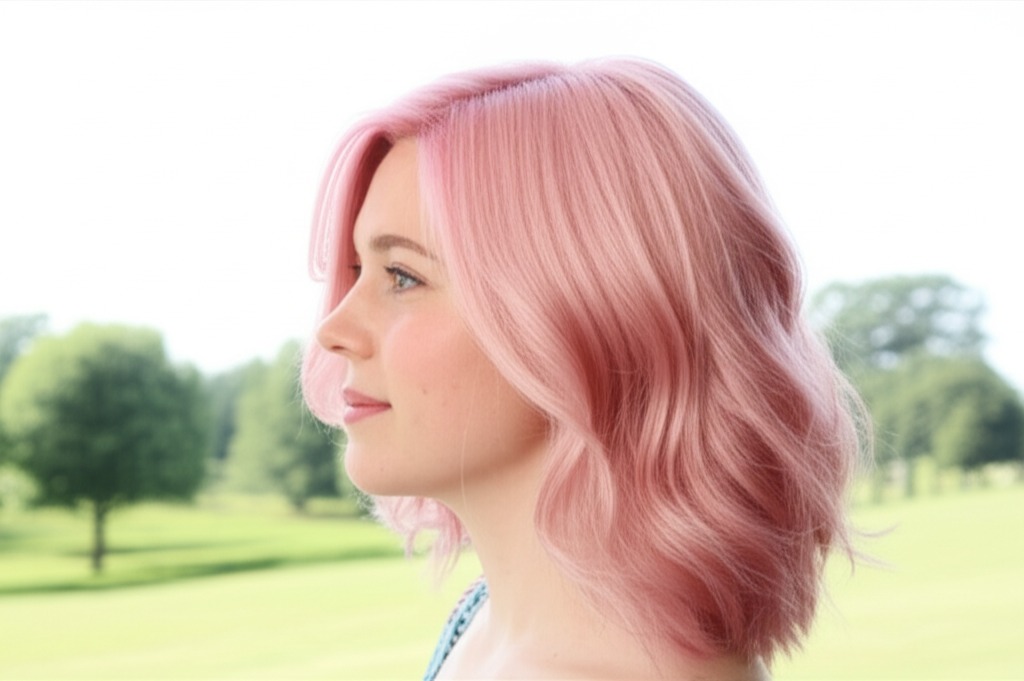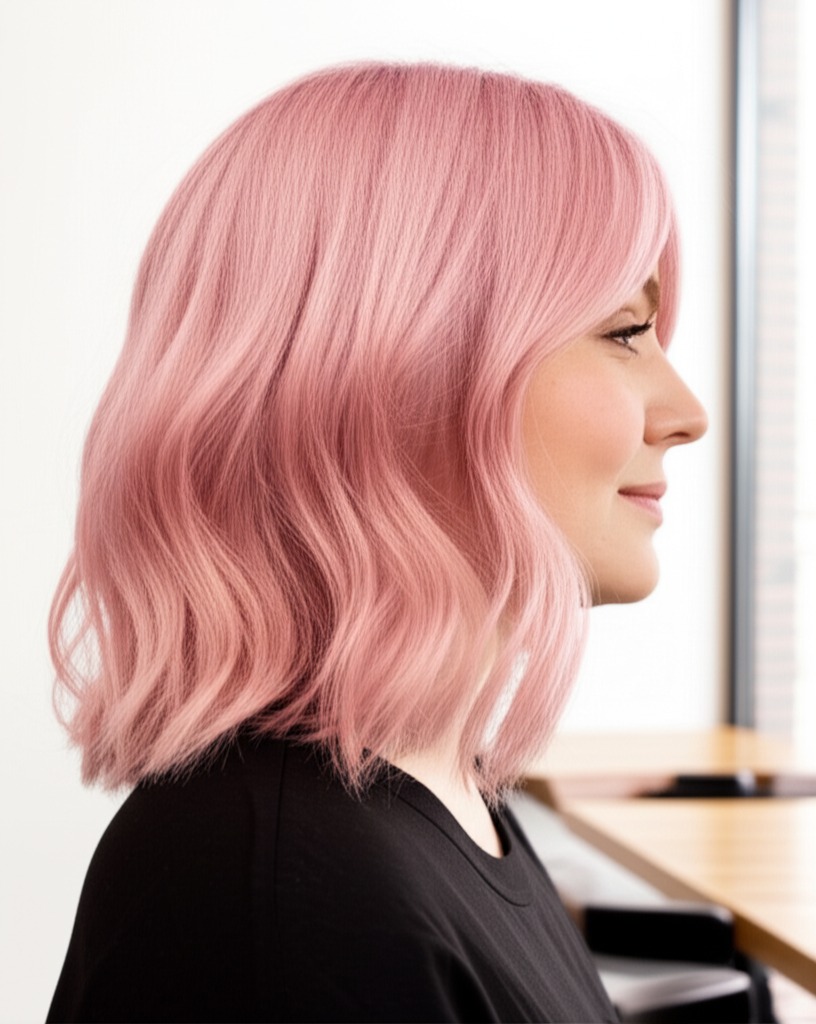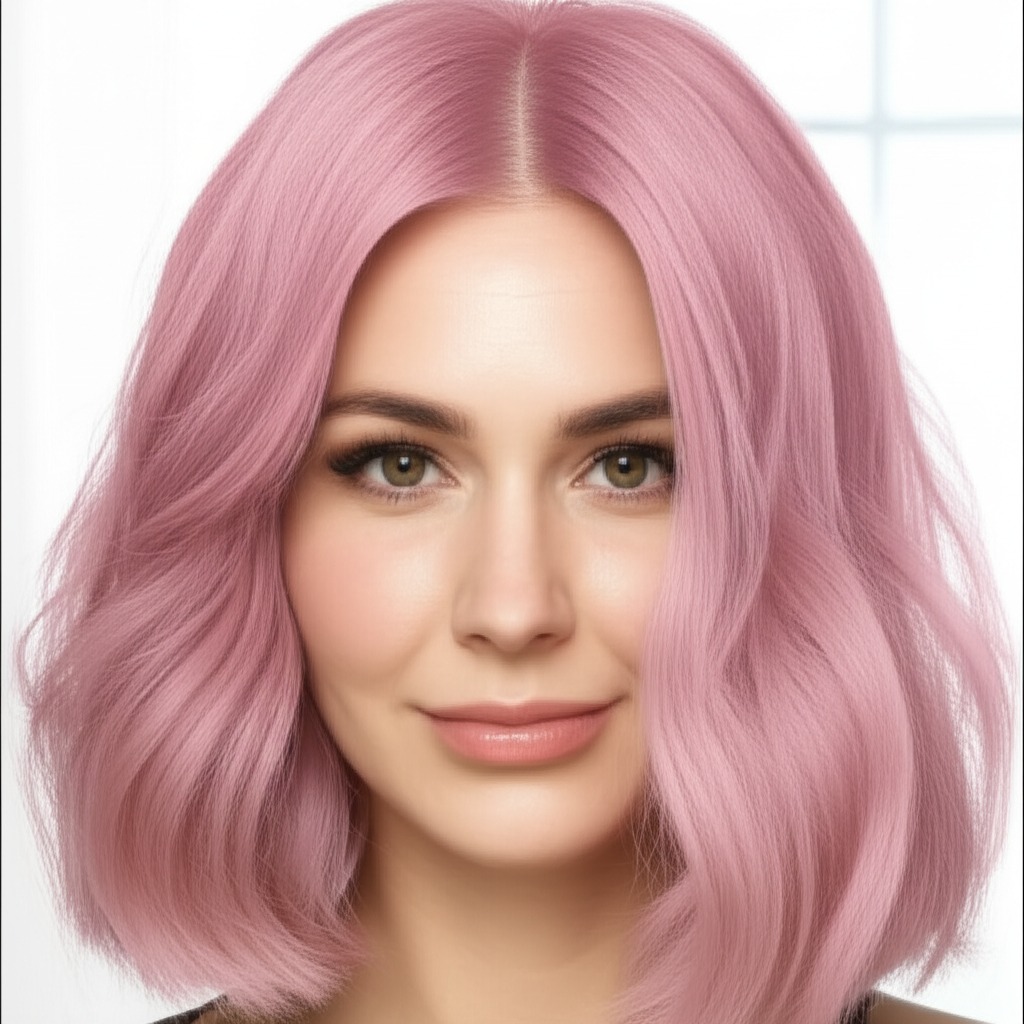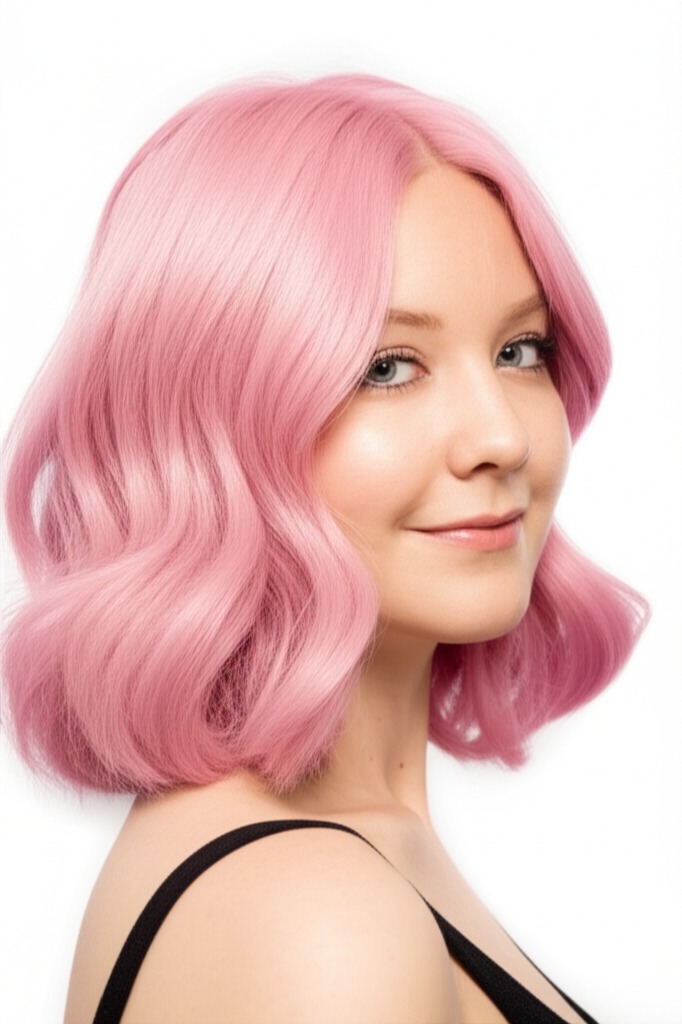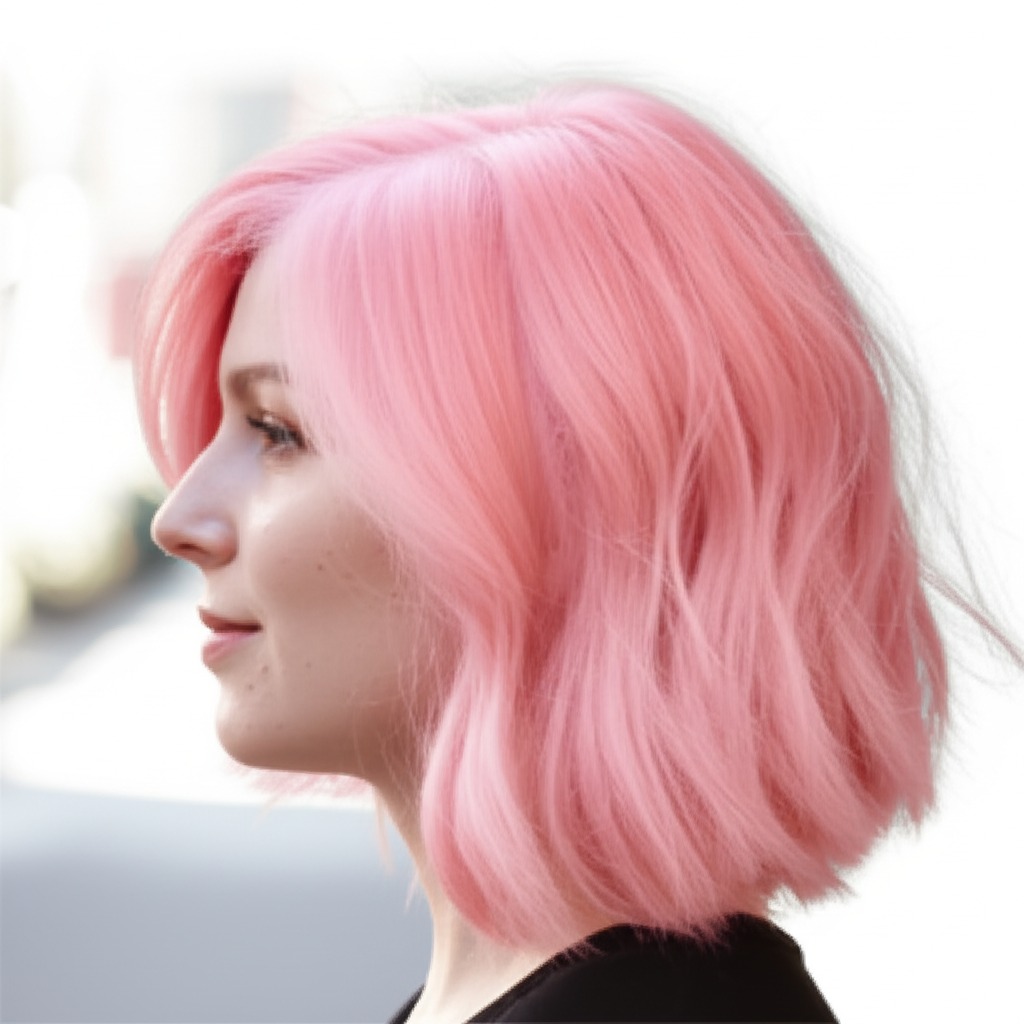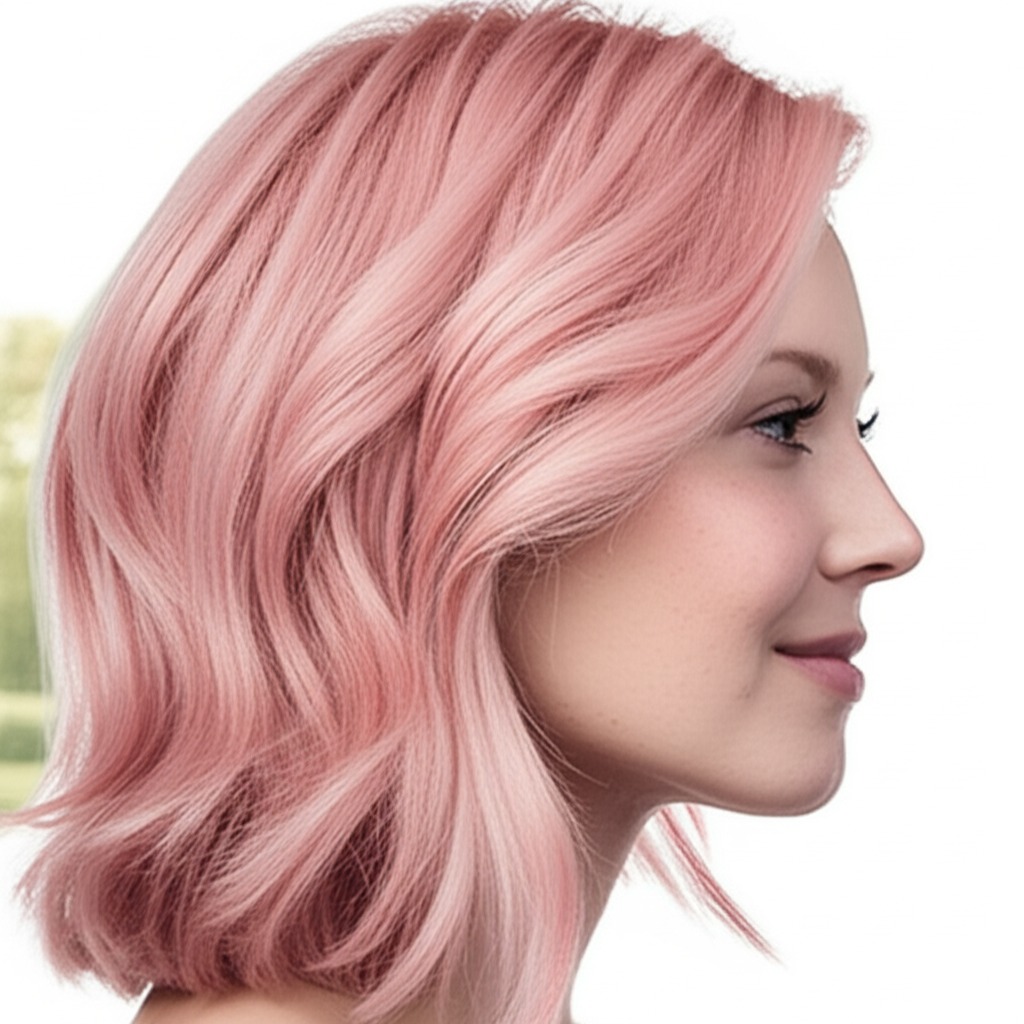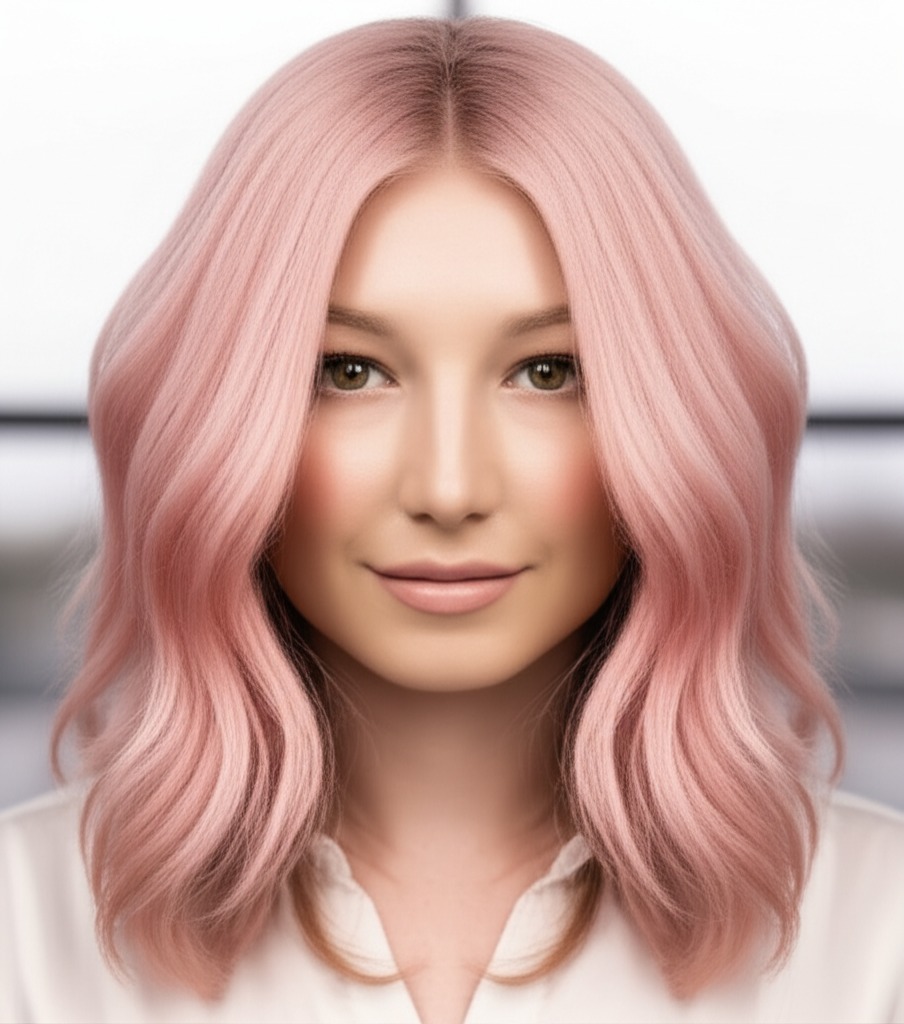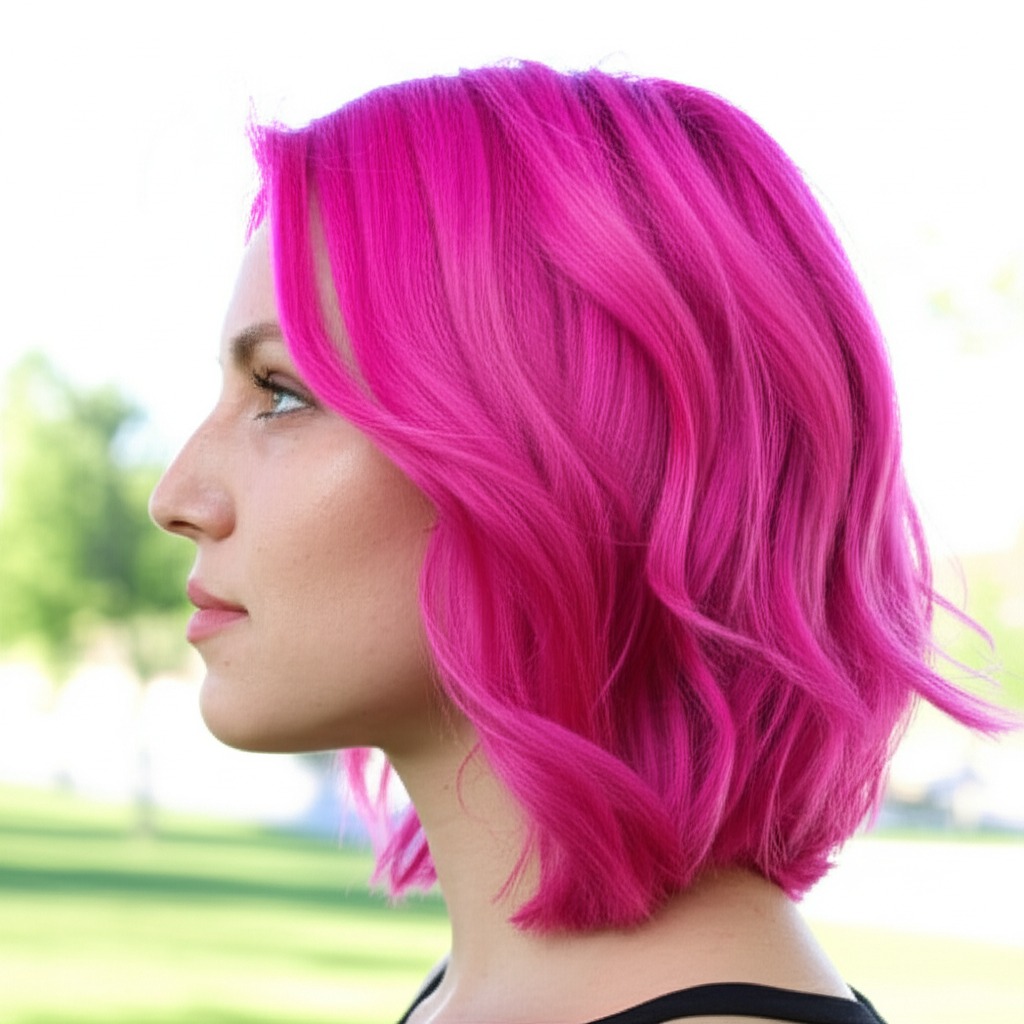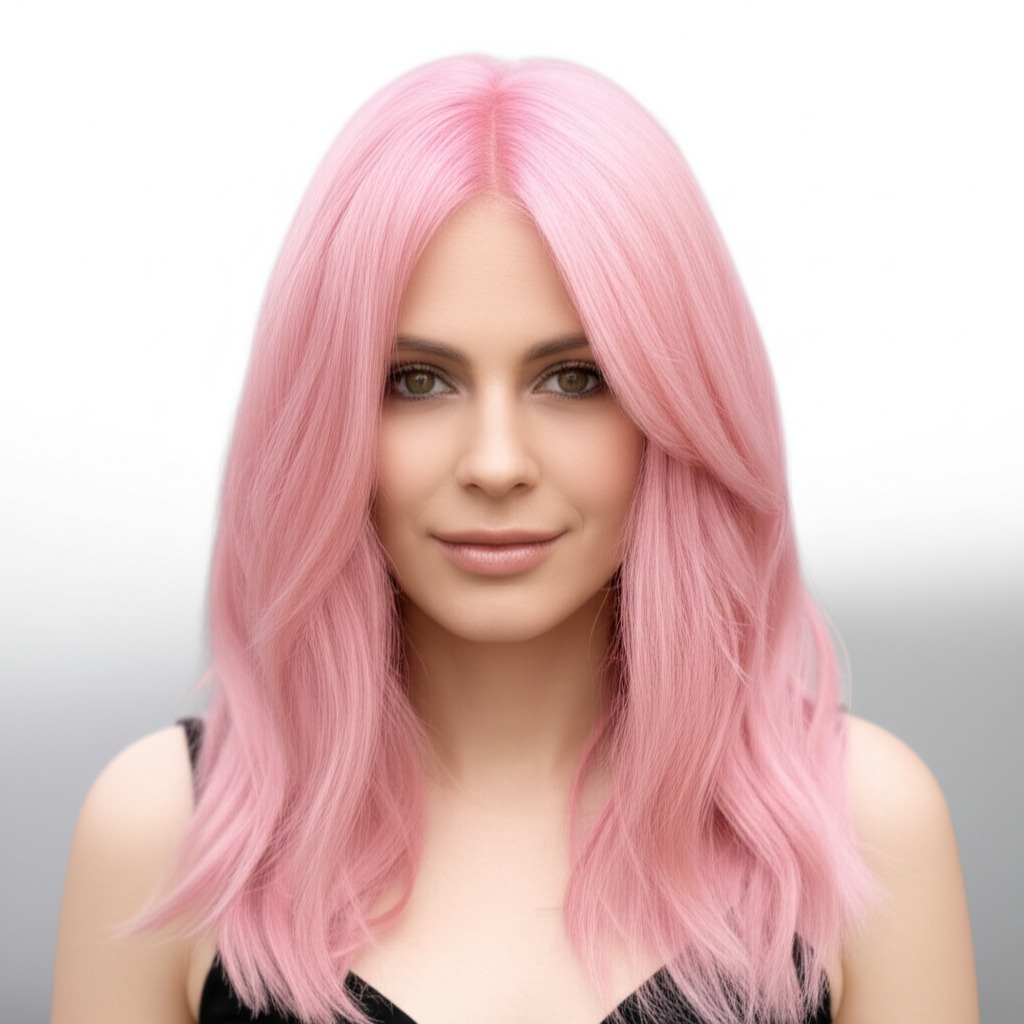#Blush Pink Hair: A Guide to the Dreamy Hue
Blush pink hair is having a moment! It's soft, romantic, and undeniably eye-catching. But achieving that perfect rosy glow isn’t as simple as slapping on some pink dye. This guide breaks down everything you need to know about blush pink – from understanding its nuances to keeping it looking fabulous for longer.
#1. Shade Definition: Understanding the Pink Spectrum
Blush pink isn't just pink. It's a specific range within that color family, and understanding the details is key.
- Undertone: Most blush pink shades lean towards cool undertones – think rosy, dusty rose, or muted salmon. Warmer blush pinks (those with peach or coral hints) exist but are less common and require more careful consideration of your skin tone (more on that later!).
- Depth/Levels: "Level" refers to how dark or light your hair is. Blush pink works best on lighter bases, typically levels 7-10. A level 7 is a medium blonde; a level 10 is very pale blonde. The darker the base, the more lifting (lightening) needed, and the higher the risk of brassiness (more on that in pitfalls!).
- Level 7-8: Requires significant lightening; blush pink will be softer and muted.
- Level 9: A great starting point for a true blush pink.
- Level 10: Allows for the most vibrant, pastel blush pink look.
#2. Who Does Blush Pink Flatter?
Not every color looks good on everyone! Here's a breakdown of who tends to shine with blush pink:
- Skin Tone & Undertone:
- Cool Skin Tones (pink, red, or blue undertones): You’re likely the perfect candidate for most blush pink shades. The cool tones in the color will complement your complexion.
- Neutral Skin Tones: Can often pull off blush pink with careful consideration of the specific shade and depth. A slightly warmer blush pink might be more flattering than a very cool one.
- Warm Skin Tones (golden, yellow, or olive undertones): Blush pink can work, but it's trickier! You’ll need to opt for a warmer, peach-toned blush pink and ensure your base is light enough to avoid clashing. A consultation with a stylist is highly recommended.
- Eye Colors: Blush pink enhances almost every eye color!
- Blue Eyes: The pink tones create a stunning contrast, making them appear even brighter.
- Green Eyes: Pink brings out the green’s vibrancy and adds warmth to your complexion.
- Brown Eyes: Blush pink creates a soft, romantic look that highlights their depth.
- Natural Level Starting Points: Ideally, you'll be starting with level 7-10 hair for best results. If you have darker hair (levels 1-6), significant lightening is required, which increases processing time and potential damage.
#3. Technique Options: Finding Your Perfect Application
How your stylist applies the color drastically affects the final look.
- Single Process: The most straightforward approach – a uniform application of blush pink across all hair. Best for those already with a light blonde base or wanting a solid, even hue.
- Highlights/Lowlights: Adding subtle highlights (lighter pieces) can create dimension and movement. Lowlights (darker pieces) are less common but could add depth if your starting level is slightly darker than ideal.
- Babylights: Ultra-fine highlights that mimic the natural sun-kissed look of a child’s hair. Creates a soft, diffused blush pink effect.
- Gloss/Toner: Used after lightening to refine the tone and add shine. Essential for achieving the desired blush pink hue and neutralizing brassiness (more on this later!).
- Balayage-Effect vs Solid: Balayage involves hand-painted highlights, creating a more natural, blended look with softer roots. A solid application is more uniform and bolder.
#4. Maintenance & Longevity: The Real Talk
Blush pink isn't low maintenance! Be prepared to invest time and money.
- Wash Frequency: Limit washes to 2-3 times per week (or less!) to preserve the color’s vibrancy.
- Toner Refresh: Expect toner touch-ups every 4-8 weeks, depending on your hair growth rate and how quickly the pink fades.
- Root Growth Pacing: As your roots grow out, the contrast with the blush pink will become more noticeable. Discuss a gradual blending approach or embrace the root shadow!
- Budget/Time Planning: This is an investment. Expect salon visits to take 2-4 hours initially and cost anywhere from $150-$500+ depending on your location, stylist expertise, and hair length/density. Toner touch-ups will be around $75 - $200+.
#5. Seasonality & Pairing with Cuts: Style it Your Way
- Seasonal Tweaks: Blush pink is gorgeous year-round! In the spring and summer, a brighter, more pastel version shines. For fall and winter, opt for a deeper, muted blush – think dusty rose or berry-toned pink.
- Common Cuts & Pairings:
- Bob/Lob: Blush pink looks incredibly chic with blunt bobs and lobs.
- Long Layers: The color will beautifully highlight the movement in longer styles.
- Pixie Cut: A bold choice! Blush pink can be playful and edgy on a pixie cut, but requires precision placement.
- Event/Occasion Picks:
- Work: A more muted blush pink or balayage effect is often best for professional settings.
- Daytime: Fun and flirty with any shade of blush pink!
- Evening: A brighter, bolder blush pink will make a statement.
- Weddings: Romantic and ethereal – a perfect choice for bridesmaids or guests!
#6. At-Home Care: Protecting Your Investment
Proper at-home care is crucial to maintaining your blush pink color.
- Sulfate-Free Shampoo & Conditioner: Sulfates strip away moisture and fade color quickly.
- Clarifying Cadence: Use a clarifying shampoo occasionally (every 4-6 weeks) to remove product buildup, but don’t overdo it!
- Heat Protection: Always use a heat protectant spray before using any styling tools.
- Color-Safe Styling Tips: Avoid harsh chemicals and excessive sun exposure. Rinse hair with cool water after washing to seal the cuticle and lock in color.
- Product Checklist: Sulfate-free shampoo, conditioner, deep conditioning mask, leave-in conditioner, heat protectant spray, dry shampoo (for extending washes).
#7. Common Pitfalls: Avoiding Color Disasters
- Brassiness: Pink is prone to turning brassy (orange/yellow tones) if the underlying base isn't properly lifted or neutralized. Always use a toner after lightening!
- Banding: Uneven color application can create noticeable bands of color. This is often due to inconsistent product saturation during the lightening process.
- Patchiness: Uneven lifting and/or uneven application can lead to patchy results, especially on darker hair.
#8. Pros & Cons: Weighing Your Options
Pros:
- Unique & Eye-Catching: Blush pink is a statement color that sets you apart.
- Versatile (to an extent): Can be adapted with different techniques and intensities to suit various styles.
- Soft & Romantic Aesthetic: Creates a delicate, feminine look.
Cons:
- High Maintenance: Requires frequent salon visits for toner touch-ups.
- Fade Risk: Pink pigments fade quickly, especially in lighter shades.
- Potential Damage: Lightening processes can damage hair if not done correctly.
#9. Salon Consultation Script: Setting Expectations
Before committing to blush pink, a thorough consultation is essential! Here are some prompts for your stylist:
- "I'm interested in blush pink hair. Can you assess my current level and determine the best approach?"
- "What’s involved in achieving this color based on my natural hair color and condition?”
- “How much lightening will be required, and what steps can we take to minimize damage?"
- "Can you show me examples of blush pink shades that would complement my skin tone?"
- "What is the estimated cost and time commitment for initial application and future maintenance appointments?"
- “I’m concerned about brassiness. What toner will be used, and how often do I need to reapply it?”
#10. FAQs: Your Burning Questions Answered
- Can I go blush pink from black hair? It's possible but requires significant lightening and is very damaging. A gradual process over several appointments is recommended.
- Is blush pink suitable for fine hair? Yes, but be mindful of potential damage from the lightening process. Protein treatments can help strengthen your hair.
- How long will blush pink last? Expect it to fade noticeably within 4-8 weeks without toner touch-ups.
- Can I do this at home? While possible, achieving a professional result is difficult and risky without experience in color correction and lightening techniques.
- What if my blush pink turns purple? This usually indicates an incorrect toner or the underlying pigments reacting with your hair's porosity.
- Will blush pink make my hair feel dry? Lightening processes can be drying, but using moisturizing products and deep conditioning treatments will help combat this.
Blush pink hair is a beautiful and expressive choice – just remember to do your research, consult with a professional stylist, and commit to the maintenance!
